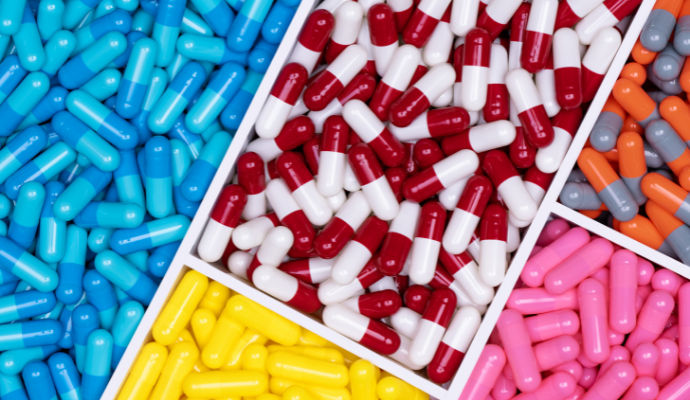Top-Selling Medicare Part D Prescription Drugs in Recent Years
Prescription drugs were not covered for Medicare beneficiaries before 2006. Now, the top-selling Medicare Part D drugs of all time include Revlimid, Eliquis, Xarelto, Trulicity, and Humira.

Source: Getty Images
- All Medicare plans must cover a wide range of prescription drugs, including most drugs in certain protected classes. But Medicare Part D plans must cover all or substantially all drugs in six categories: antidepressants, antipsychotics, anticonvulsants, antiretrovirals, immunosuppressants, and anticancer.
Prescription drugs were not covered for Medicare beneficiaries before 2006. But the passage of the Medicare Prescription Drug, Improvement, and Modernization Act developed Medicare Part D.
Medicare Part D plan enrollment has doubled since the start of the program, covering 48 million out of the 62 million people covered by Medicare, according to the Kaiser Family Foundation.
In 2022, beneficiaries in each state will have the option to enroll in a Part D plan participating in an Innovation Center model. The model’s enhanced drug plans cover insulin products at a monthly copayment of $35 in the Part D benefit’s deductible, initial coverage, and coverage gap phases.
A total of 2,159 Part D plans will participate in this model, a 32 percent increase from last year.
Medicare Part D drugs derived an estimated net spending of $145 billion in 2019, according to an April 2021 Kaiser Family Foundation analysis. And the ten top-selling Part D covered medications with no generic or biosimilar competition accounted for 0.3 percent of all covered products but 16 percent of net total Part D spending that year.
The top-selling Medicare Part D drugs of all time include Revlimid, Eliquis, Xarelto, Januvia, Imbruvica, Trulicity, Ibrance, and Humira.
According to an analysis from Xtelligent Healthcare Media’s Research Team, Eliquis, Revlimid, and Xarelto remained the top-three-selling Medicare Part D drugs from 2018 to 2020.
Number one top-selling drug Eliquis generated $4.9 billion in 2018, $7.3 billion in 2019, and $9.93 billion in 2020, while Revlimid generated $4.06 billion in 2018, $4.6 billion in 2019, and $5.3 billion in 2020.
Landing in the third top-selling Medicare Part D drug spot, Xarelto brought in $3.3 billion in 2018, $4.07 billion in 2019, and $4.7 billion in 2020. Januvia closely followed, generating $3.2 billion, $3.5 billion, and $3.8 billion in 2018, 2019, and 2020, respectively.
The demand for Trulicity, Ibrance, and Humira varied throughout the three years. For example, Trulicity generated $1.3 billion in 2018 and $1.8 billion in 2019 but jumped over one billion to $3.2 billion in 2020. And while Imbruvica generated just $1.8 billion in 2018, demand for the drug increased in 2019 and 2020, bringing in nearly $2.4 billion in 2019 and $2.9 billion in 2020. Lastly, Humira generated $2.3 billion in 2018, $1.7 billion in 2019, and $2.1 billion in 2020.
Prescription drug prices in the US are significantly higher than in other nations. Recently, experts found that drug spending increased by 76 percent in the US from 2000 to 2017.
For example, experts expect total net prescription drug spending to reach nearly $400 billion in 2025, increasing from $359 billion in 2020, an IQVIA analysis found. These numbers reflect an increase in competition between manufacturers and payer negotiations.
Total Medicare spending has increased year over year. For example, Medicare spending in 2018 was $740 billion and $796 billion in 2019. But total spending increased by over 100 billion in 2020, generating a notable $925 billion.
In 2018, Medicare overspent by 20.6 percent compared with Costco pharmacy member prices for the most commonly prescribed generic prescription drugs. And overall, Medicare spending grew 3.5 percent to $829.5 billion in 2020, or 20 percent of total National Health Expenditure.
According to Congressional Budget Office (CBO) estimates, spending on Medicare Part D benefits will total $111 billion in 2022. This number represents 15 percent of net Medicare outlays. Additionally, Medicare’s reinsurance payments to Part D plans now account for 45 percent of total Part D spending, up from 14 percent in 2006.
